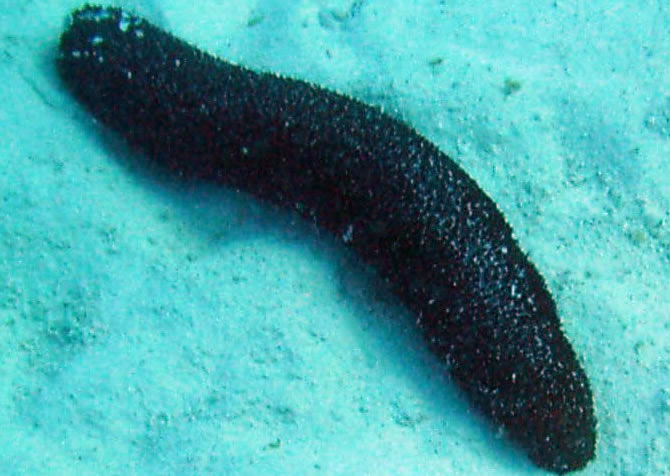|
|
Classification Domain: Eukarya- Domain is the broadest classification of an organism. Domain Eukarya is divided into four kingdoms, Protista, Animalia, Plantae and Fungi. Eukarya is characterized by having complex cells membrane bound organelles, and the genetic material is located inside the nucleus. Kingdom: Animalia- Organisms classified under Animalia are multicellular, feed by consuming other organisms which makes them heterotrophic. They do not have a cell wall, and they are comprised of cells. Phylum: Echinodermata- Echinoderms are among the most distinctive of all animal phyla. Inclusion in the phylum is readily diagnosable on basis of the four synapomorphies below. Most of these features are present, or can be inferred, even in the earliest fossils. Together, these synapomorphies define much of what makes the functional biology of echinoderms distinctive from that of other metazoans. Class: Holothuroidea- Holothuroidear has longated body and leathery skin, which is found on the sea floor worldwide. It is named also because of its cucumber-like shape. Order: Aspidochirotida- There are about 340 species in 35 genera and three families. Tentacles are shield-shaped. Respiratory trees are present. The calcareous ring is without posterior projections. The body wall is generally soft and pliant. Most forms live in shallow water, though one family is restricted to the deep sea. Family: Holothuriidae- A family of aspidochirotacean echinoderms in the order Aspidochirotida possessing tentacular ampullae and only the left gonad. Genus: Holothuria- Sea cucumber whose soft and somewhat cylindrical body can be from 15 to 40 cm in length. The surface is covered by numerous conical short outgrowths, generally white. The colour is variable, brown, black, yellowish with brown mottlings. The mouth, at one end of the tube-shaped body is surrounded by small oral tentacles used to collect the mud from which the sea cucumber extracts various nutrients. Species:Holothuria pardalis (Holothuria means sea cucumber, Pardalis means wildcat, true cat)
Phylogenetic Tree of Holothuria pardalis
|

